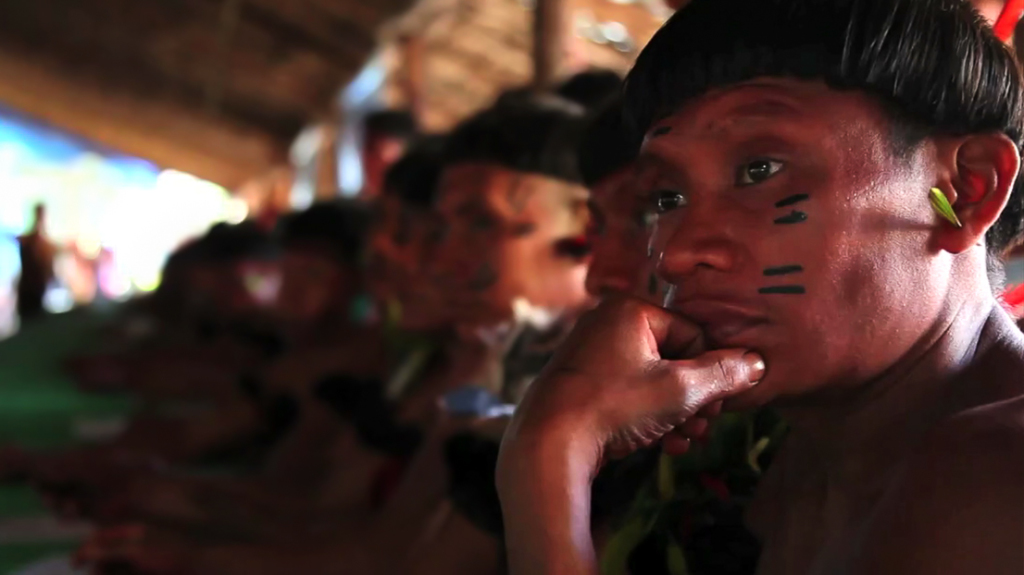Since the colonization of Brazil around 500 years ago, the indigenous tribes have lived through a depriving history: Not less than five centuries of massacre and torture, without mentioning the victims of newly imported illnesses during the invasion of their ancestral lands. In consequence, the Autochthonous have been exploited on all levels and became a cheap labor force as many of them were working under conditions of slavery.
Many peoples and tribes have been completely exterminated since the arrival of the Europeans. It is estimated that at that age around 6 million indigenous people lived on the territory of nowadays’ Brazil. Knowing that their number figures less than one million today, around 900 000, the notion of genocide is being employed. All these vanished peoples imply so many native languages, so many different ways of life, and so many different cultures that remain irrevocably lost from our planet.
The majority of the remaining indigenous tribes in Brazil live from hunting, fishing, gathering and agriculture. Only the ‘isolated’ and ‘untouched’ groups are entirely nomadic and live exclusively of hunting and gathering.
The establishment of contacts with their surrounding societies differs depending on the tribe: The Guarani, who inhabit the dry lands of southern Brazil, have been in contact with Whites since 500 years. With regard to the Yanomami, the contact with Whites was firstly established in the 1960s and even other tribes have never approached yet their neighboring societies. As such, it is estimated that a number of around sixty tribes remain totally isolated within Brazil, which approves the latter as the major country where this phenomenon continues to be found.
Nowadays’ Brazil counts less than one million indigenous people, divided up in 241 groups dispersed among the entirety of the regions of this vast country. The size of these indigenous groups varies from tens of thousands of individuals, for example with regard to the Yanomami, to a few dozens of individuals when considering tribes such as the Akuntsu or the Kanoê.
Until today, a part of the Brazilian society and quite a number of politicians keep holding prejudices with regard to the Natives; certain among them are even openly racist. In this context, the indigenous people often find themselves being depicted as an impediment to economic development and being considered as thieves when reclaiming the right to their ancestral lands.
Today, their lands still remain in the hands of large landowners and are being exploited within the frame of industrial projects, such as the construction of hydro-electric dams (Belo Monte, etc.), or being invaded by miners, gold diggers, illegal fishers and hunters or settlers.
This non-highlighted contact bears severe consequences for the indigenous people: Most often, they die either from illnesses transmitted by the invaders, from malnutrition when being deprived from their hunting grounds, or from the repulsive violence emanating from the farmers and the “landowners” who are determined to use any means necessary in order to chase the Natives from their grounds. In this sense, malaria, diarrhea and influenza constitute new nuisances against which the Natives are not prepared and against which they rely on special treatment.
The Brazilian constitution of 1988 acknowledges the right of the indigenous people to dispose of their ancestral lands and a considerable number of these grounds have been demarcated and recognized over the last years. Moreover, the differentiated indigenous education, characterized by its adaptation to the living reality of each tribe, constitutes another formally acknowledged right by the Brazilian legislation. Unfortunately, these formal rights are not always translated into practice as the majority of these demarcated indigenous grounds are regularly pillaged by invaders.
Time and the future will show whether Dilma Roussef will take note of Brazil’s indigenous peoples’ claims and will respect their fundamental rights during her second term as President of Brazil.

©Filhos da Lua
Sources:
http://www.survivalfrance.org/peuples/bresil
http://pib.socioambiental.org/pt/c/quadro-geral

 Français
Français Português
Português